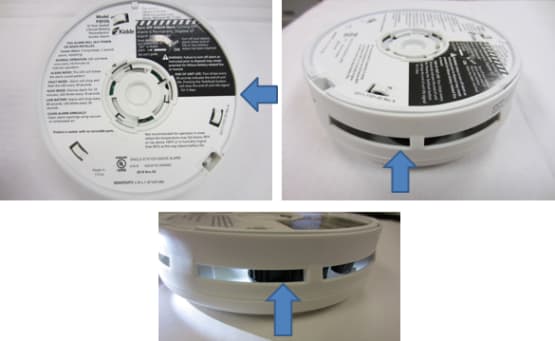GMC Power Window Troubleshooting: Step-by-Step Guide
GMC power window troubleshooting involves checking the power switch and ensuring the window motor is functioning correctly. Common issues include a malfunctioning power switch or a blown fuse.
To fix a car window that won’t roll up, you can replace the power switch or test it using a multimeter for continuity. If the switch is working properly, the problem may lie with the window motor or wiring. If the window glass is crooked or sags, it could be a window regulator issue, while movement problems usually indicate a faulty window motor.
It is recommended to follow a GMC power window troubleshooting process and check the fuse before proceeding with further troubleshooting steps.

Common Issues With Gmc Power Windows
When it comes to power windows in GMC vehicles, there are a few common issues that owners may encounter. From malfunctioning power switches to blown fuses and window motor malfunctions, these problems can be frustrating to deal with. In this section, we will explore each of these issues in detail.
Malfunctioning Power Switch
If your GMC power windows are not moving, a malfunctioning power switch is likely the culprit. The power switch is responsible for controlling the movement of the windows, and over time, it can wear out or get damaged. Luckily, power switch replacement is a straightforward and inexpensive fix that can restore the functionality of your windows.
Blown Fuses Preventing Electrical Controls From Working
If your power windows are not responding to the controls, the fuses handling the electrical controls for the windows may have blown. Blown fuses can occur due to various reasons, such as a power surge or a malfunctioning component. Checking the fuses located in the fuse box and replacing any blown fuses can resolve this issue and get your windows working again.
Accidental Engagement Of Child Safety Lock
Another common issue with GMC power windows is accidentally engaging the child safety lock. The child safety lock feature is designed to prevent children from opening windows while inside the vehicle. However, it can be easy to unintentionally engage this feature, which can lead to the windows becoming unresponsive. Checking the child safety lock switch located near the window controls and disengaging it can resolve this issue.
Window Motor Malfunction
If the power switch and fuses are working correctly, but your GMC power windows still won’t move, there may be a problem with the window motor. The window motor is responsible for physically moving the window up and down. Over time, these motors can wear out, resulting in the windows becoming stuck or unresponsive. Replacing the faulty window motor can rectify this issue and restore the smooth operation of your power windows.
In conclusion, while GMC power windows are generally reliable, they can experience common issues such as malfunctioning power switches, blown fuses, accidental engagement of child safety locks, and window motor malfunctions. By identifying the specific issue and taking the appropriate troubleshooting steps, you can regain the convenience and functionality of your GMC power windows.
Troubleshooting The Power Switch
Testing The Power Switch With A Multimeter
When it comes to troubleshooting issues with your GMC power window, one of the most common culprits is a malfunctioning power switch. Luckily, testing the power switch is a fairly straightforward process that can help you determine if it is functioning correctly. One tool that can be invaluable for this task is a multimeter. By using a multimeter, you can test the electrical continuity of the power switch and pinpoint any potential issues.
Checking For Continuity
To test the power switch with a multimeter, you will need to set the multimeter to continuity mode. This mode allows you to check if there is an uninterrupted flow of electrical current through the switch. Start by disconnecting the power switch from the electrical system of your GMC. Then, place the multimeter probes on the corresponding terminal contacts of the switch.
If the multimeter beeps or shows a reading of zero ohms, it means there is continuity and the switch is functioning properly. However, if there is no beep or the multimeter displays infinite resistance, it indicates a lack of continuity and a potential issue with the power switch. This could be due to a faulty switch mechanism, loose connections, or other electrical problems.
Replacing The Power Switch If Necessary
If your tests reveal that the power switch is not functioning correctly and there is a lack of continuity, it’s time to consider replacing the switch. Thankfully, replacing a power switch is a relatively simple process and can save you from further frustration with your power window.
- Start by identifying the correct replacement power switch for your GMC model and year. You can find this information in your vehicle’s manual or by consulting with a trusted automotive parts supplier.
- Gather the necessary tools for the replacement process, including a screwdriver, pliers, and electrical tape.
- Disconnect the negative terminal of your vehicle’s battery to ensure safety during the replacement process.
- Locate the power switch panel and remove it by gently prying it off with a screwdriver. This will give you access to the faulty power switch.
- Disconnect the wiring harness from the old switch by carefully pulling it off from the terminals.
- Remove the screws or clips holding the power switch in place and take out the old switch.
- Install the new power switch by reversing the steps above, connecting the wiring harness, securing the switch in place, and reattaching the power switch panel.
- Reconnect the negative terminal of the battery, turn on your vehicle’s ignition, and test the power switch by attempting to operate the power window.
Remember to exercise caution when working with electrical components and consult a professional if you are unsure about any step of the replacement process.
Checking The Fuses
When it comes to troubleshooting power window issues in your GMC, one of the first things you should check is the fuse. Fuses are essential components that protect the electrical system of your vehicle from damage. If a fuse related to your power windows is blown, it could be the reason why your windows are not functioning properly. In this section, we will guide you through the process of checking the fuses for any issues.
Locating The Fuse Box
The first step in checking the fuses for your GMC power windows is to locate the fuse box. The fuse box is usually located in one of two places: either under the dashboard on the driver’s side or in the engine compartment. To locate the fuse box, consult your vehicle’s owner’s manual or check the manufacturer’s website for specific information related to your GMC model.
Identifying The Window Fuse
Once you have located the fuse box, the next step is to identify the fuse that is responsible for the power windows in your GMC. In the fuse box, each fuse is labeled with a number or letter to indicate its purpose. Look for the fuse that is labeled specifically for the power windows.
–example Table —
| Fuse | Description |
|---|---|
| Fuse 1 | Power Windows, Driver Side |
| Fuse 2 | Power Windows, Passenger Side |
| Fuse 3 | Power Windows: Rear |
Checking For Blown Fuses
After identifying the window fuse, it’s time to check if the fuse is blown. A blown fuse can be easily identified by its discolored appearance or a broken wire visible inside the fuse. Using a fuse puller or a pair of needle-nose pliers, gently pull the fuse out of its socket to examine it. If you find that the fuse is indeed blown, it will need to be replaced with a new one.
Replacing Blown Fuses
To replace a blown fuse, follow these steps:
- Make sure the vehicle is turned off to avoid any electrical mishaps.
- Refer to your owner’s manual or fuse box diagram to determine the correct amperage and type of fuse needed.
- Using the fuse puller or pliers, carefully insert the new fuse into the appropriate socket.
- Gently push the fuse into place until it is secure.
- Once the new fuse is installed, turn on your vehicle and test the power windows to ensure they are functioning properly.
By checking the fuses in your GMC power window system, you can easily determine if a blown fuse is the cause of your window troubles. If the issue persists even after replacing the fuse, it is recommended to seek professional help to diagnose and repair the problem.
Dealing With The Child Safety Lock
Disengaging The Child Safety Lock
When it comes to troubleshooting power windows in your GMC vehicle, one common issue that may arise is the child safety lock being engaged accidentally. The child safety lock is a feature installed on the rear windows to prevent young children from opening the window while inside the car. However, if this feature is mistakenly engaged, it could prevent the window from operating properly.
To disengage the child safety lock, you will need to locate the switch or lever on the door panel. This switch or lever is usually located near the window controls and may have an icon representing a child or a lock. Once you have identified the switch or lever, simply push or slide it in the opposite direction to disengage the lock.
It is essential to note that the location and design of the child safety lock switch or lever may vary depending on the model and year of your GMC vehicle. Therefore, it is recommended to consult your vehicle’s manual for specific instructions on disengaging the child safety lock.
Testing The Window After Disengaging The Lock
After disengaging the child safety lock, it is crucial to test the window to ensure it is functioning correctly. This will help you determine if disengaging the lock has resolved the issue or if further troubleshooting is necessary.
To test the window, simply press the window switch or button corresponding to the window you are troubleshooting. If the window now moves freely up and down without any issues, then it indicates that disengaging the child safety lock was successful in resolving the problem.
However, if the window still does not move or exhibits other irregularities, it may indicate a different underlying issue. In such cases, it is recommended to consult a professional mechanic or refer to your vehicle’s manual for further troubleshooting steps.
Remember, proper maintenance and care are essential to ensuring the smooth operation of your GMC’s power windows. Regularly inspecting the child safety lock and being cautious while using the window controls can help prevent potential issues and keep your power windows in optimal condition.
Diagnosing Window Motor Issues
When it comes to power windows, a malfunctioning window motor can be a frustrating issue to deal with. It can result in the window not moving up or down or moving slowly and inconsistently. If you’re experiencing any of these problems, it’s important to diagnose the issue accurately to determine if the window motor is the culprit. In this section, we’ll discuss the signs of a malfunctioning window motor, how to test it using a multimeter, and when to consider replacing it.
Signs Of A Malfunctioning Window Motor
If your power window is acting up, there are a few common signs that could indicate a problem with the window motor. These signs include:
- The window moving slowly or sluggish
- The window getting stuck and not moving at all
- An unusual noise coming from the door when operating the window
- The window moving up or down in an uneven or crooked manner
These signs indicate that there might be an issue with the window motor, and further troubleshooting is necessary to confirm the problem.
Testing The Window Motor With A Multimeter
If you suspect that the window motor is faulty, you can use a multimeter to test its functionality. Here’s how:
- Start by removing the door panel to access the window motor.
- Disconnect the wiring harness from the motor.
- Set the multimeter to the resistance or continuity mode.
- Attach the multimeter to the corresponding terminals of the motor.
- If the multimeter reads a low resistance or shows continuity, it means the window motor is functional. However, if there is no reading or high resistance, it indicates a faulty motor that needs to be replaced.
By testing the window motor with a multimeter, you can confirm whether it is the cause of the window malfunction and proceed with the necessary repairs.
Replacing The Window Motor If Necessary
If the window motor fails the multimeter test or shows signs of severe wear and tear, it’s time to consider replacing it. Here’s a step-by-step guide on how to replace the window motor:
- Remove the window regulator from the door.
- Disconnect the wiring harness from the motor.
- Remove the mounting screws that secure the motor to the regulator.
- Install the new window motor in place of the old one.
- Reconnect the wiring harness.
- Test the new window motor to ensure it operates smoothly and without any issues.
- Reinstall the door panel.
Replacing the window motor can resolve the power window issues and restore proper functionality to your vehicle.
In conclusion, diagnosing window motor issues is essential to effectively troubleshoot power window problems. By recognizing the signs of a malfunctioning motor, testing it with a multimeter, and replacing it if necessary, you can successfully resolve power window issues and ensure the smooth operation of your GMC vehicle.
Frequently Asked Questions
What Is The Most Common Issue With Power Windows?
The most common issue with power windows is a malfunctioning power switch. This can prevent the window from moving, but it is a relatively inexpensive fix to replace the switch.
What Causes The Power Window To Stop Working?
The power window may stop working due to blown fuses, the child safety lock is engaged by accident, or a malfunctioning window motor. Another common reason is a faulty power switch. Check the fuses, ensure the child safety lock is disengaged, and consider testing the power switch or motor for any issues.
How Do I Know If My Window Switch Or Motor Is Bad?
To determine if your window switch or motor is bad, you can perform a few tests. First, check the fuse and switch for continuity. If there is no continuity, replace the switch. If your power windows still don’t work after replacing the fuse and switch, it might indicate a problem with the motor or wiring.
You can also look for signs like crooked window glass or sagging, which suggest a window regulator issue.
How Do I Know If I Need A New Window Regulator Or Motor?
To determine if you need a new window regulator or motor, check for certain signs. If the window glass is crooked, sags when not in use, or has fallen, it’s likely a window regulator issue. If the window doesn’t move at all, the motor could be the problem.
What Is The Most Common Reason Why A Power Window Is Not Moving?
A malfunctioning power switch is the most common reason why a power window is not moving. Power switch replacement is inexpensive.
Conclusion
Troubleshooting power window issues in a GMC vehicle requires a thorough understanding of the common problems and potential causes. By checking the power switch, fuses, window motor, and window regulator, you can pinpoint the source of the problem and take appropriate action.
Replacing a faulty power switch or motor is relatively inexpensive and can restore the functionality of your windows. Remember to consult resources like online tutorials and seek expert advice if needed. With the right troubleshooting process, you can enjoy smooth and hassle-free power windows in your GMC.






